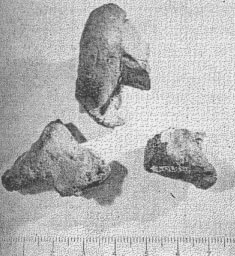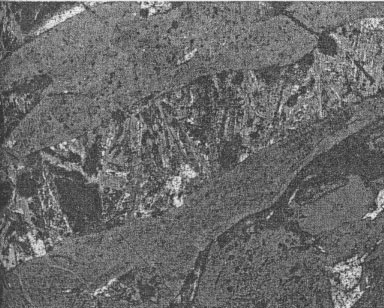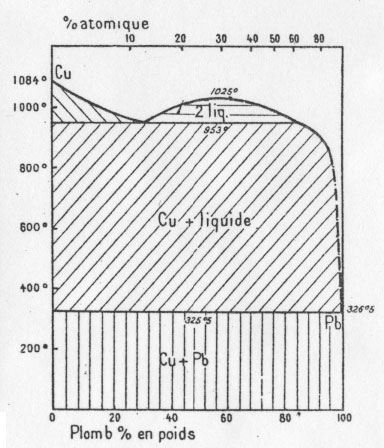
|
|
Volume 40, pages 770-771, 1955 Notes and news: LLAMA BONES WITH LEAD-COPPER MINERALIZATION FROM BOLIVIA* CHARLES MILTON, U. S. Geological Survey, Washington 25, D. C. In assembling materials for a paper dealing with the preservation of fossils being prepared by a member of the U. S. Geological Survey, it was learned that there were some mineralized and supposedly fossil bones in the paleontological collections at Harvard College. The bones were reported to be replaced by copper or copper compounds. Through the kindness of Dr. Alfred S. Romer of the Museum of Comparative Zoology, the bones (Fig. 1) were borrowed for examination. They are labeled in German: "Vertebrae impregnated with copper-mineral collection of Friedrich Ahlfeld." The bones are notably heavy and show perfectly preserved bone structure. They consist of calcium phosphate largely replaced by green and red oxides (massicot and litharge) and also probably by lead phosphate, with metallic lead, copper, and probably traces of silver. Figure 2 shows a polished section of the bone. Figure 3 is of another polished section showing replacement of bone by lead oxide. The observed relations of the metallic lead and copper are in all respects those that would follow from the cooling of a melt consisting of lead with some copper, as may be seen from consideration of the equilibrium diagram for the Pb-Cu system (Fig. 4). It is possible that in a cupellation process bones were used for some reason, instead of the customary bone ash. Molten lead then would seep down, with its dissolved copper (and perhaps silver), to lodge eventually in the bone pores and there crystallize. At the same time oxide compounds of these metals would crystallize as illustrated. To confirm or disprove this hypothesis of the mineralization of the bones, inquiry was made of Seņor Ahlfeld, who, under date of May 4, 1954, stated that "the bones were those of the modern llama collected from the surface near an old copper smelter in the Corocoro district."
NOTE * Publication authorized by the Director, U. S. Geological Survey. [var:'startyear'='1955'] [Include:'footer.htm'] |



